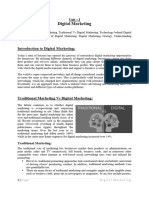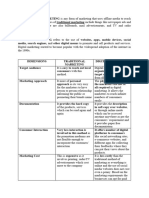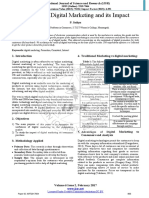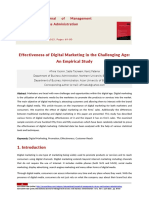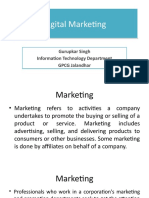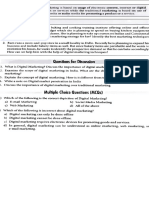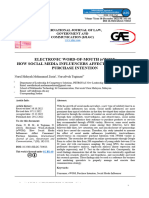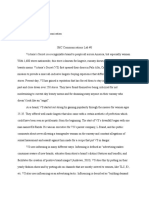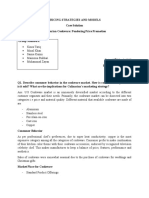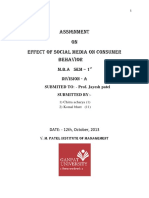0% found this document useful (0 votes)
41 views11 pagesUnit I
The document discusses the evolution and significance of digital marketing in contrast to traditional marketing, emphasizing the advantages of digital platforms such as better measurement, broader reach, and interactivity. It outlines key components of digital marketing, including SEO, content marketing, social media, and email marketing, while highlighting the importance of a strong online presence through a well-designed website. Additionally, it addresses the technological advancements that have shaped marketing practices and the opportunities for businesses to build their brand online.
Uploaded by
feliciajose200407Copyright
© © All Rights Reserved
We take content rights seriously. If you suspect this is your content, claim it here.
Available Formats
Download as PDF, TXT or read online on Scribd
0% found this document useful (0 votes)
41 views11 pagesUnit I
The document discusses the evolution and significance of digital marketing in contrast to traditional marketing, emphasizing the advantages of digital platforms such as better measurement, broader reach, and interactivity. It outlines key components of digital marketing, including SEO, content marketing, social media, and email marketing, while highlighting the importance of a strong online presence through a well-designed website. Additionally, it addresses the technological advancements that have shaped marketing practices and the opportunities for businesses to build their brand online.
Uploaded by
feliciajose200407Copyright
© © All Rights Reserved
We take content rights seriously. If you suspect this is your content, claim it here.
Available Formats
Download as PDF, TXT or read online on Scribd
/ 11


